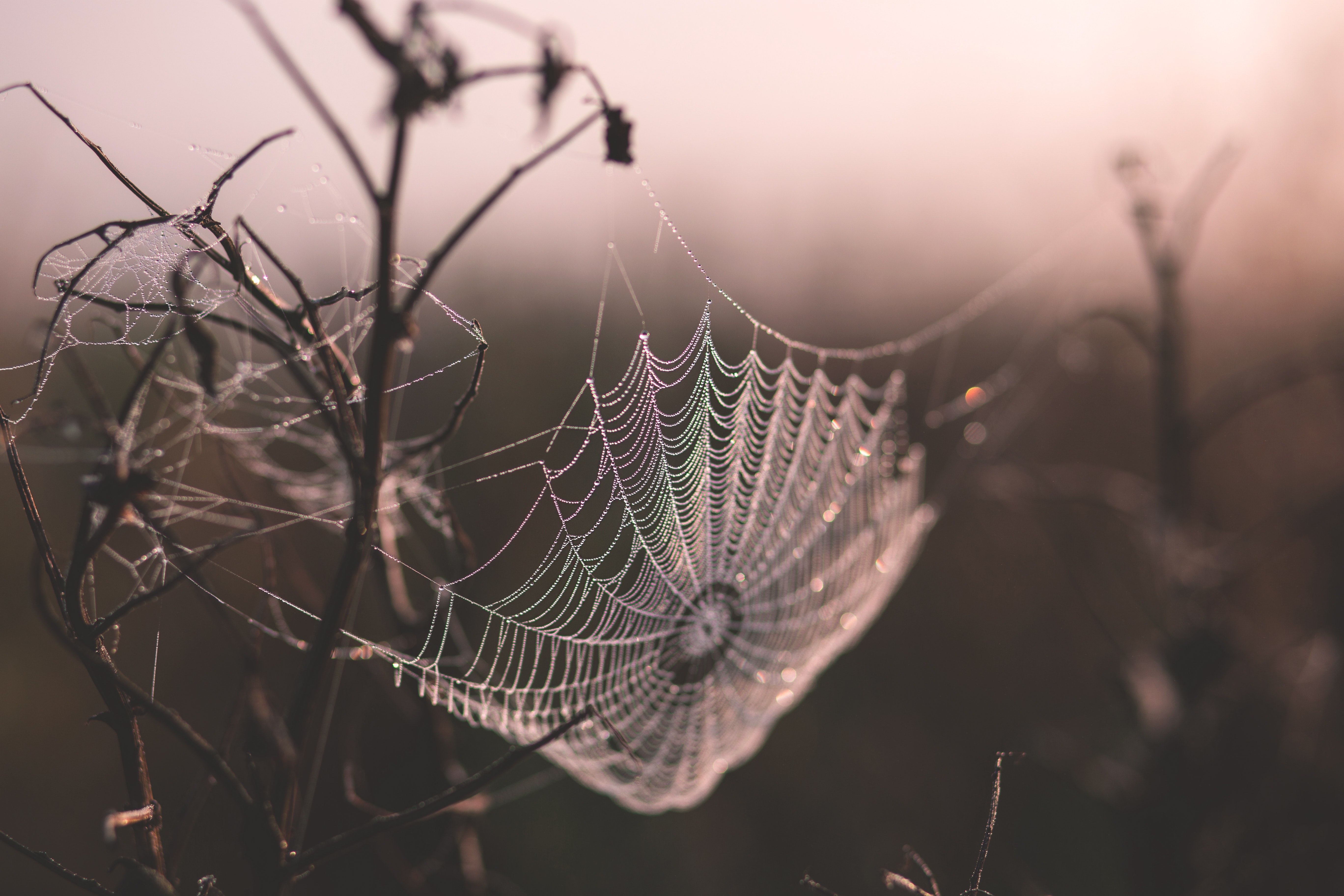

Image courtesy of Laura Bassett, via Wikimedia Commons. The spider then eats the prey, along with the silk cocoon. Then, the spider covers the prey with digestive fluid and liquefies it. Instead, they constrict their prey using silk, sometimes hundreds of meters of silk at once. Unlike other spiders, Uloborids do not have venom. Some spiders of the genus Uloboridae form more triangular versions of the orb web.

The silk threads are woven in a spiral, and the apullate threads radiate out from the center of the spiral, supporting the weight of the web and anything that lands on it. These ampullate threads form the main structural components of the web. Orb weavers, in the spider family Araneidae, use adhesive strands of silk to retain their prey, as well as ampullate threads to keep the adhesive strands in place. The web must withstand the pressure of insect landings and the strain from escapes. The orb weaver spiderweb is crafted in a way that not only allows it to capture prey but also to maintain structural integrity. Since there are 117 families of spiders-more than 45,000 different species-there are plenty of different webs out there, too. To fulfill their purpose, they must be flexible and sturdy, and just sticky enough. Spiderwebs are architectural and geometric masterpieces. These fibers are quite useful for ensnaring prey. The silk fibers, each about 10 nanometers thick, surround thicker core fibers. Some spiders have a cribellum, which produces a type of segmented silk. Spiders have between two and four spinnerets most have three. Besides their venom, some spiders have hunting strategies such as cocooning prey in silk.Īttached to the spider’s abdomen are organs called spinnerets, which produce silk. Additionally, many spiders produce venom, which they use to kill or subdue their prey, or to defend against threats. All spiders produce silk, although not all of them use this silk to spin webs. Spiders all have eight legs, no wings, two body sections, and an exoskeleton. Other arthropods include lobsters, crabs, scorpions, and insects, as well as the extinct trilobite. Spiders are arachnids, which are a class of arthropods. Image by Andrew Brown via Wikimedia Commons. In addition, they’re an essential food source for predators like birds, lizards, and small mammals. In the wild, they help control insect populations, as well as other spider populations. This can help curb diseases and also make a home more pleasant. House spiders eat common pests, such as flies and mosquitoes.

While it’s true that there are a few species that pose a real danger to humans-the black widow and the brown recluse, for example-most just seek a humble existence. mages of her terrors are reinforced by the spider’s killing or paralyzing its victims with venom from hollow fangs, and the female’s habitual devouring of the typically smaller male after mating” (Ronnberg, 2010).ĭespite their reputation as killers and creepy things, spiders are often more friendly than fearsome. The spider “embodies the Terrible Mother’s gruesome mysteries of death and dissolution. The webs of spiders come in many shapes and serve many functions, like helping them hunt prey and hide from predators.Īre you afraid of spiders? I don’t blame you.


 0 kommentar(er)
0 kommentar(er)
